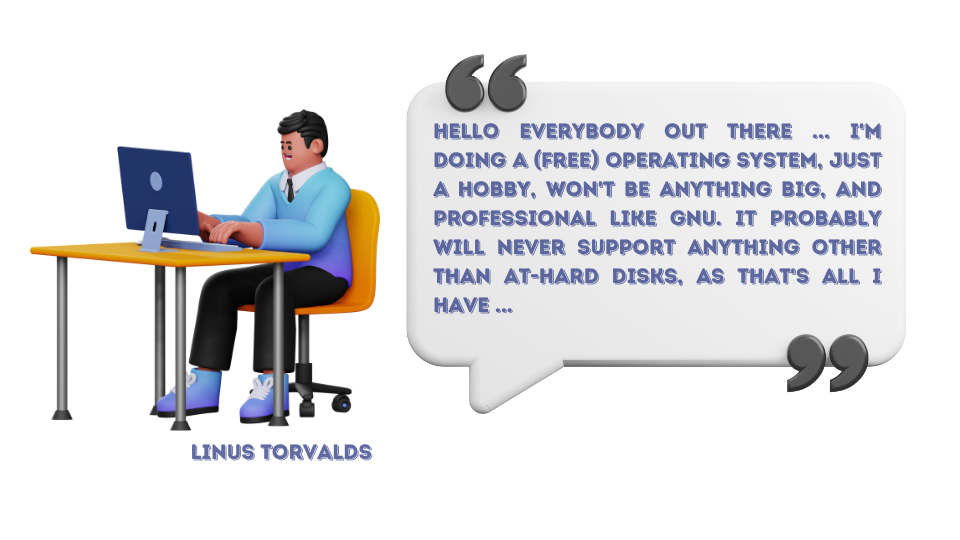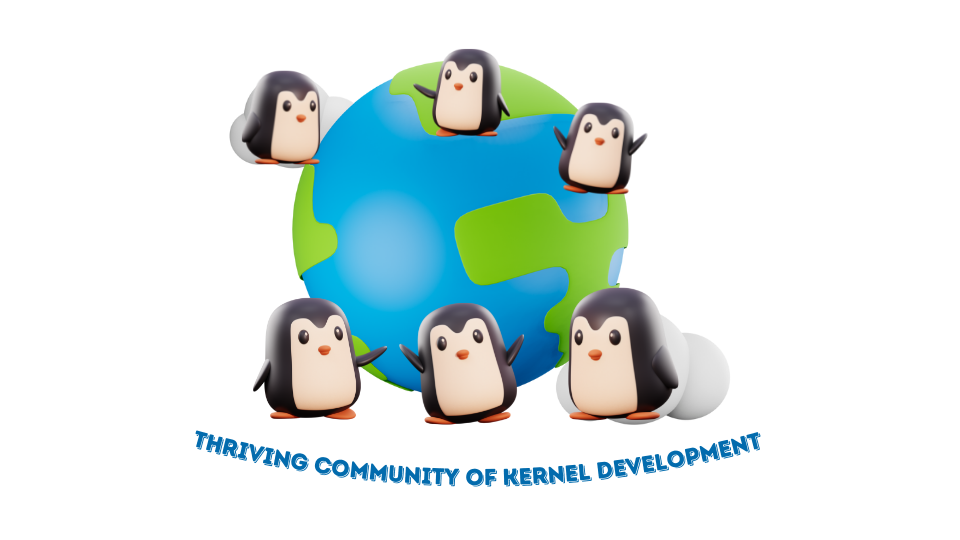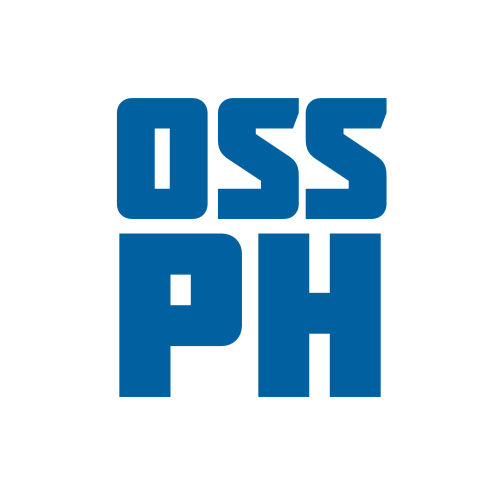Looking back at the History of Open Source Software

Where it all started
Our story begins 30 years ago. Boris Yeltsin has been sworn into office. Jay Leno replaced Johnny Carson on the Tonight show. Cell phones were really big. It was August of 1991. A 20-year-old computer science student named Linus Torvalds sat down at his computer in Helsinki to post what is now one of the most famous entries in computing history.

Then, the word of the Linux open source project quickly spread around the globe. Developers from all over contributed their code. Linus named his OS kernel, Linux. He chose a penguin as its mascot, after a little incident at the zoo. Soon, he made a very important decision that would shape Linux. He chose the GPL license, created by a visionary named Richard Stallman. The Linux kernel along with the GPL license, and other GNU components, revolutionized the computing industry with a few very simple yet very important freedoms:
- the freedom to use the software for any purpose
- the freedom to change the software to suit your needs
- the freedom to share the software with your friends and neighbors
- the freedom to share the changes you make
How Linux survived and thrived
These radical ideas fueled its spread around the world. In 1999, Red Hat stock tripled, as it became the first Linux company to go public. In that same year, IBM spent a billion dollars to improve and advertise Linux. Soon, Linux was knocking out industry heavyweights and fueling the rise of the Internet with its free software.
In short, Linux revolutionized computing. But whenever something is this disruptive there's bound to be competitive crossfire. But Linux not only survived, but it also thrived.

Today, the kernel development community numbers thousands, with hundreds of companies collaborating on Linux development. Every three months another version of Linux is released.
So where is Linux today? It is running in 75 stock exchanges worldwide and powering the servers that deliver Amazon, Facebook, Twitter, eBay, and Google.
Linux in our lives
We use Linux literally every time we surf the internet. It's in our phones, in our tv, running 95 percent of supercomputers, and in many of the devices, we use every day. Linux is everywhere and the Helsinki-based programmer who started it all, he orchestrates this worldwide army of developers from his home office in portland Oregon, as a fellow at the Linux foundation. Now, it has been more than 30 years since the birth of Linux.
TL;DR
- Linus Torvalds started Linux as an open source software project in August 1991.
- He chose the GPL license, enabling multiple freedoms in the use and development of software.
- It has been over 30 years since Linux became part of our lives.
Resources:
O'Reilly Media, Inc. (n.d.). A Brief History of Linux. O'Reilly Online Learning. Retrieved October 6, 2022, from https://www.oreilly.com/library/view/running-linux-third/156592469X/ch01s02.html
History of linux. Linux Scripts Hub. (2018, August 11). Retrieved October 6, 2022, from https://linuxscriptshub.com/history-of-linux/
About the author
Kathleen Jogno is a technical writer at OSSPH and a Computer Engineering graduate at the Technological Institute of the Philippines. Feel free to connect with Kathleen on Twitter, GitHub, and Linkedin.

